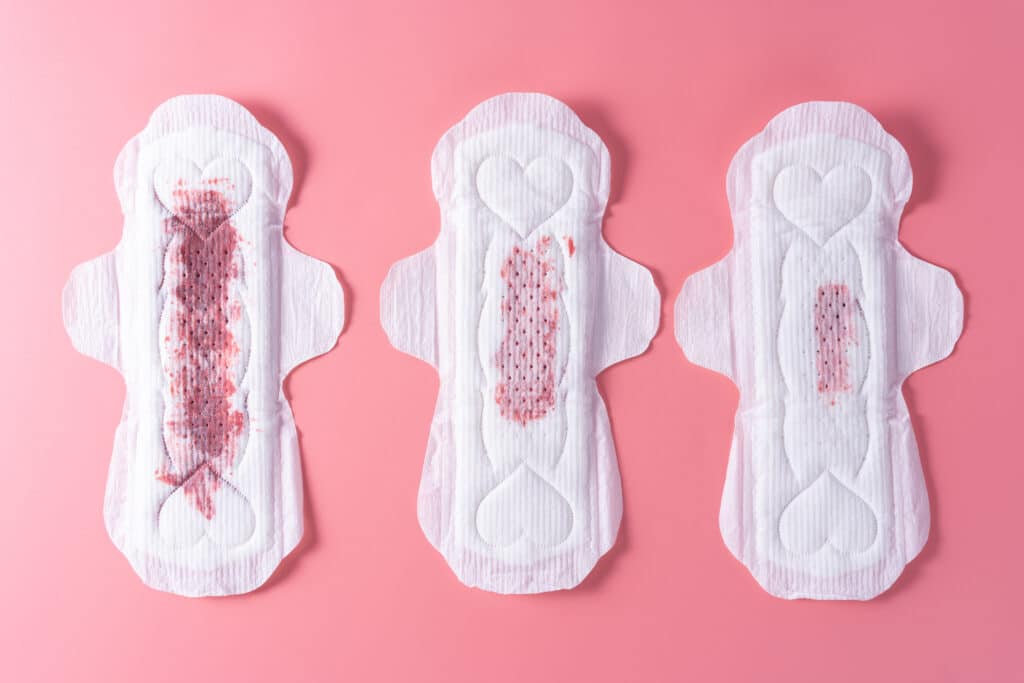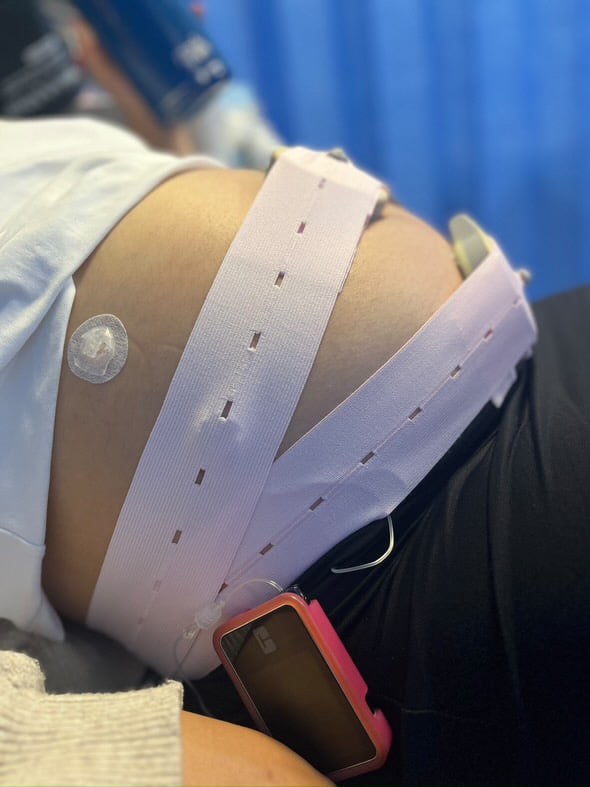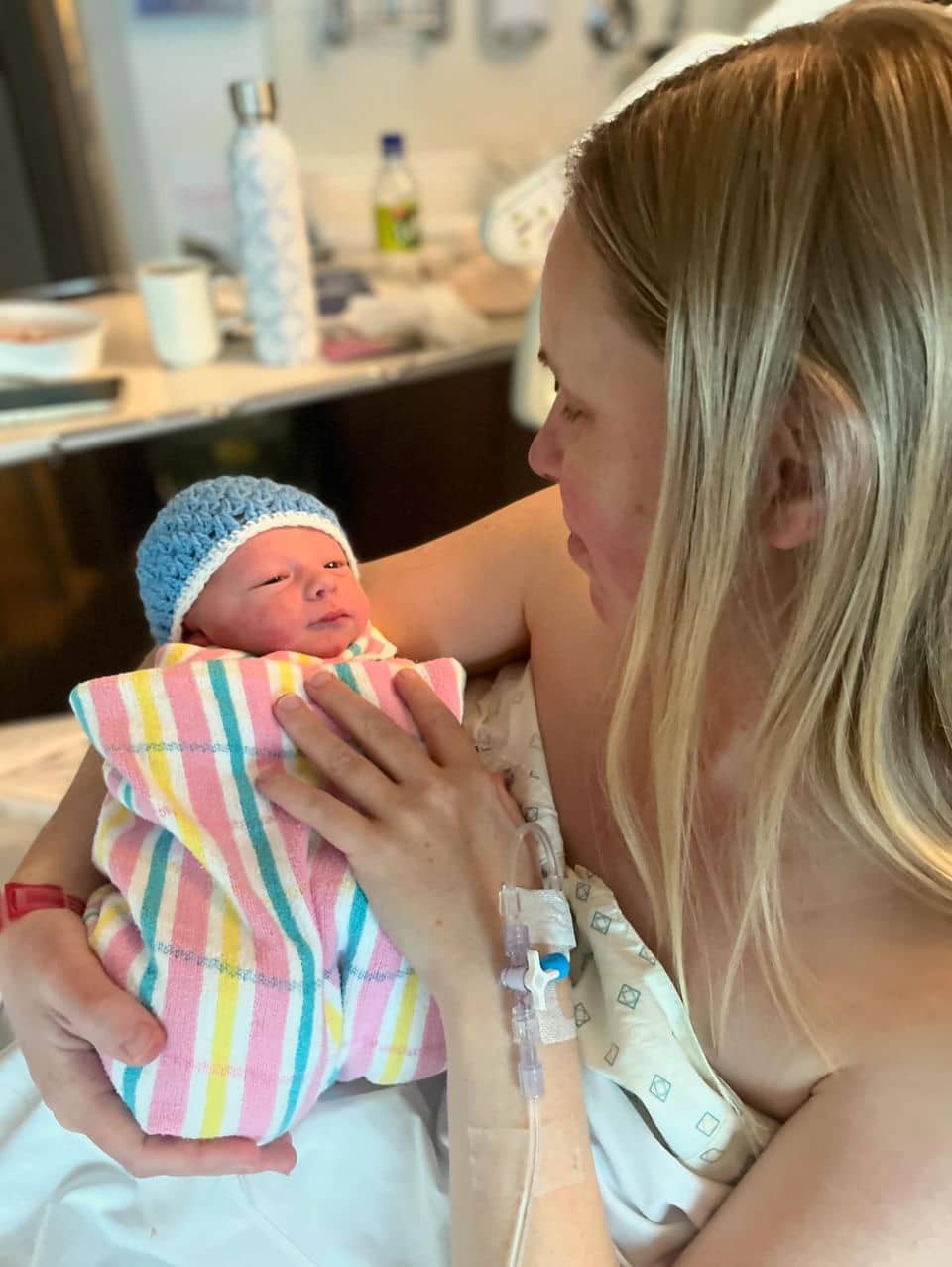Pregnancy Implantation Bleeding
Implantation Bleeding

Any blood in pregnancy can be alarming and should always be discussed with your care provider. Very light spotting can occur early in your pregnancy (roughly when your period is due) and in most cases, this will be implantation bleeding.
What is implantation bleeding?
Implantation bleeding is a small amount of light spotting (pink-brown in colour and spots as opposed to the flow of a period) that occurs roughly 5 to 10 days after ovulation. Generally speaking it will only last for one to three days.
Why does it occur?
Remarkably, it’s thought to happen when the fertilised egg attaches/implants to the lining of the uterus. It’s around this time that you may consider doing a pregnancy test. The test is designed to detect the pregnancy hormone human chorionic gonadotropin (or hCG) in your urine. But your body only starts producing this hormone the moment that the fertilised egg implants in the uterus (this is the trigger for implantation bleeding). So yes, it’s best to wait a few days before your period to test. That said, there are many early detection tests available and they may accurately detect your pregnancy as early as five days before your period is due.
When does implantation bleeding typically occur?
Based on a 28-day cycle (learn more about ovulation tracking here),
- Day 1. First day of menstrual period.
- Days 14. Ovulation occurs 14 days before your next menstruation.
- Days 14 to 15. Fertilization occurs 0 to 1 day after ovulation (typically within hours of ovulation).
- Days 20 to 24. Implantation happens 6 to 7 days after fertilization, and implantation bleeding may occur for a few days.
How long does implantation bleeding last?
Implantation bleeding will usually only last for one or two days.
What are the symptoms?
Your body may also give you other signs that implantation has been successful although they aren’t a definitive sign that you have conceived. They include:
- cramping. They are very mild and only last for a short period of time (and they’re not always a symptom of implantation) but some women who are trying to conceive report mild cramping around the time of implantation.
- sore breasts. Implantation and PMS can both prompt sore, sensitive breasts. The main difference is that PMS symptoms only last a few days whereas implantation breast sensitivity can continue well into your pregnancy. If you are pregnant you may also start to notice a fullness to your breasts and a subtle darkening of the areola.
- frequent urination. An increase in hCg and the hormone progesterone can impact the frequency of your toilet trips. Plus your body is creating amniotic fluid, the water that surrounds your baby in the amniotic sac, so you’ll commonly notice a need to drink more. It’s good to keep in mind that even from early pregnancy, your body requires at least 2L of water a day. If you find drinking water a challenge, I highly recommend investing in a stainless steel drink bottle with in-built straw. It makes drinking easier, it’s great for taking regular sips (ideal if you have first trimester nausea) and it’s an absolute must-have during labour and postpartum. Consider it a good investment.
Implantation bleeding vs. period bleeding: How to tell the difference
Distinguishing the difference between implantation bleeding and period bleeding can be challenging as the two can sometimes have similar characteristics. However, there are some differences that may help you determine which one you are experiencing:Timing: Implantation bleeding usually occurs around 6 to 12 days after conception, which is typically a few days before your expected period. On the other hand, period bleeding occurs at the start of your menstrual cycle, around the same time each month.
- Flow: Implantation bleeding is generally lighter and shorter in duration compared to a regular period. It might be only a few drops or light spotting, while menstrual bleeding tends to be heavier and last for several days.
- Colour: Implantation bleeding often appears as light pink or light brown, whereas period blood is usually bright red initially and may darken over the course of the cycle.
- Consistency: Implantation bleeding is often described as being more watery and less viscous compared to menstrual blood, which tends to be thicker.
- Cramping: While some women may experience mild cramping during implantation, it is typically not as intense as menstrual cramps.
- Other symptoms: During implantation, you may notice other early pregnancy symptoms, such as breast tenderness, fatigue, nausea, or heightened sense of smell. These are not typically associated with a regular period.
Keep in mind that not all women experience implantation bleeding, and the signs can vary from person to person. Moreover, some individuals might mistake other forms of bleeding or spotting for implantation or vice versa. If you are unsure about what you are experiencing, it is best to take a pregnancy test or consult a healthcare professional for a more accurate assessment.
When should I take a pregnancy test?
When you are doing a home pregnancy test, it’s always recommended to pee on the stick first thing in the morning. This is when your urine is most concentrated and the test is more likely to pick up the presence of hCG. If you get a faint positive line on your test, you may want to try again the following day (and the day after that) as you can expect the line to get darker as time progresses (and the levels of hCG in your urine increase). Generally speaking, you can get a false-negative on home pregnancy tests but you can’t get a false-positive.
If you have conceived with fertility assistance, you can expect your fertility clinic to call you with the results of your blood test. I’ve interviewed countless women on the podcast who have conceived via IUI or IVF and I’m not exaggerating when I say that the majority of women do home pregnancy tests before they get a call from the clinic (even though it’s commonly advised not to).
If you would like to learn more about your fertile window and ovulation tracking you might like to read more here.
Can you take a pregnancy test during implantation bleeding?
If you choose to test when you are spotting, the more likely you are to get a false negative test result. A false negative can happen when you are pregnant, but your hCG levels are not yet high enough to trigger a positive result on a home pregnancy test.
How long after implantation bleeding can I test?
The best thing to do is wait a couple of days after seeing implantation spotting before taking a pregnancy test. This gives your body time to produce detectable levels of hCG. For the most accurate results, wait until your period is due before taking a home pregnancy test.
The following stories share experiences of women who had bleeding in early pregnancy who went on to have have healthy pregnancies. You cab hear Rachel’s pregnancy story with implantation bleeding and Claire who also had bleeding in early pregnancy.
Our Podcast Picks for You
Categories
Related Products
-
Welcome to the First Trimester
11 reviews$67.00An informative and comforting 5-part audio course guiding you through the first 12 weeks of pregnancy.
Get your copy of our Perineal Massage Guide in your inbox
Keep Reading
We think you might enjoy these articles

The Emergency C-Section Checklist You’ll Be Thankful You Had

Pre-existing Diabetes and Pregnancy: What You Need to Know

Harnessing the Power of Acupressure: A Natural Approach to Preparing for Birth

Thoughtful Christmas Gifts for your Pregnant Friend.

What is Pre-eclampsia?

Non-invasive Prenatal Testing (NIPT)
@AustralianBirthStories
Follow along with us
@AustralianBirthStories
Follow along with us
@AustralianBirthStories
Follow along with us
@AustralianBirthStories
Follow along with us
@AustralianBirthStories
Follow along with us
@AustralianBirthStories
Follow along with us
@AustralianBirthStories
Follow along with us
@AustralianBirthStories
Follow along with us
@AustralianBirthStories
Follow along with us
@AustralianBirthStories
Follow along with us
@AustralianBirthStories
Follow along with us
@AustralianBirthStories
Follow along with us




